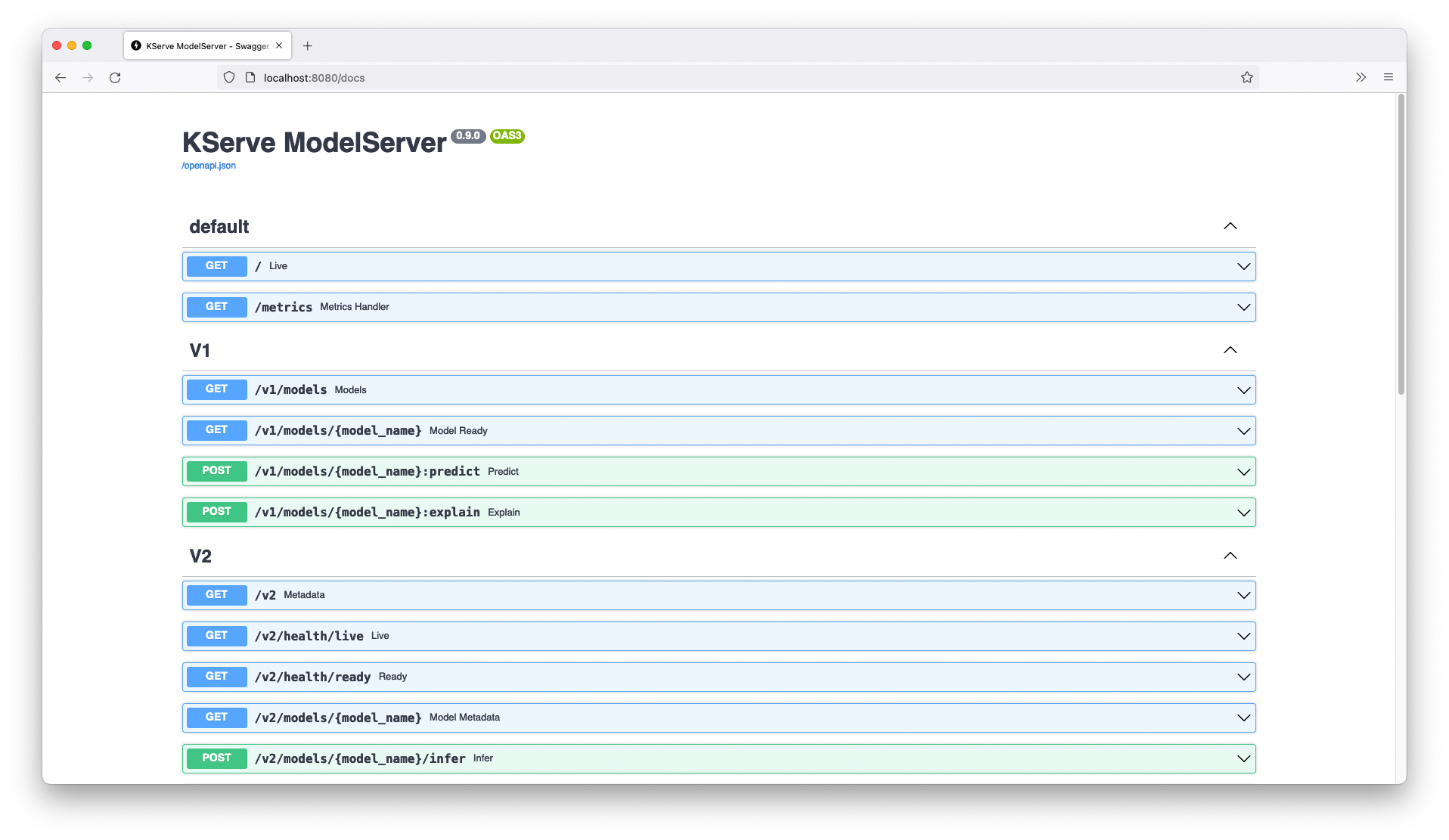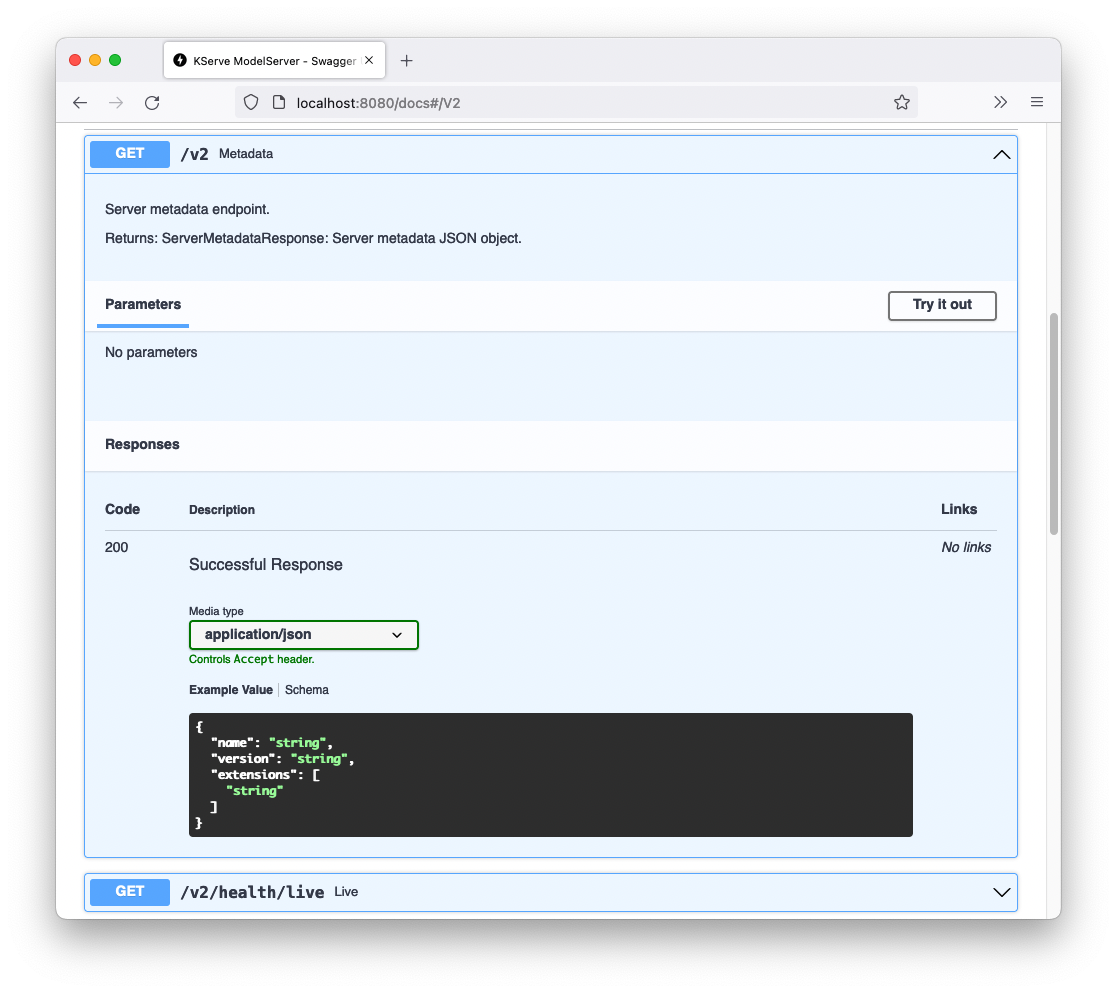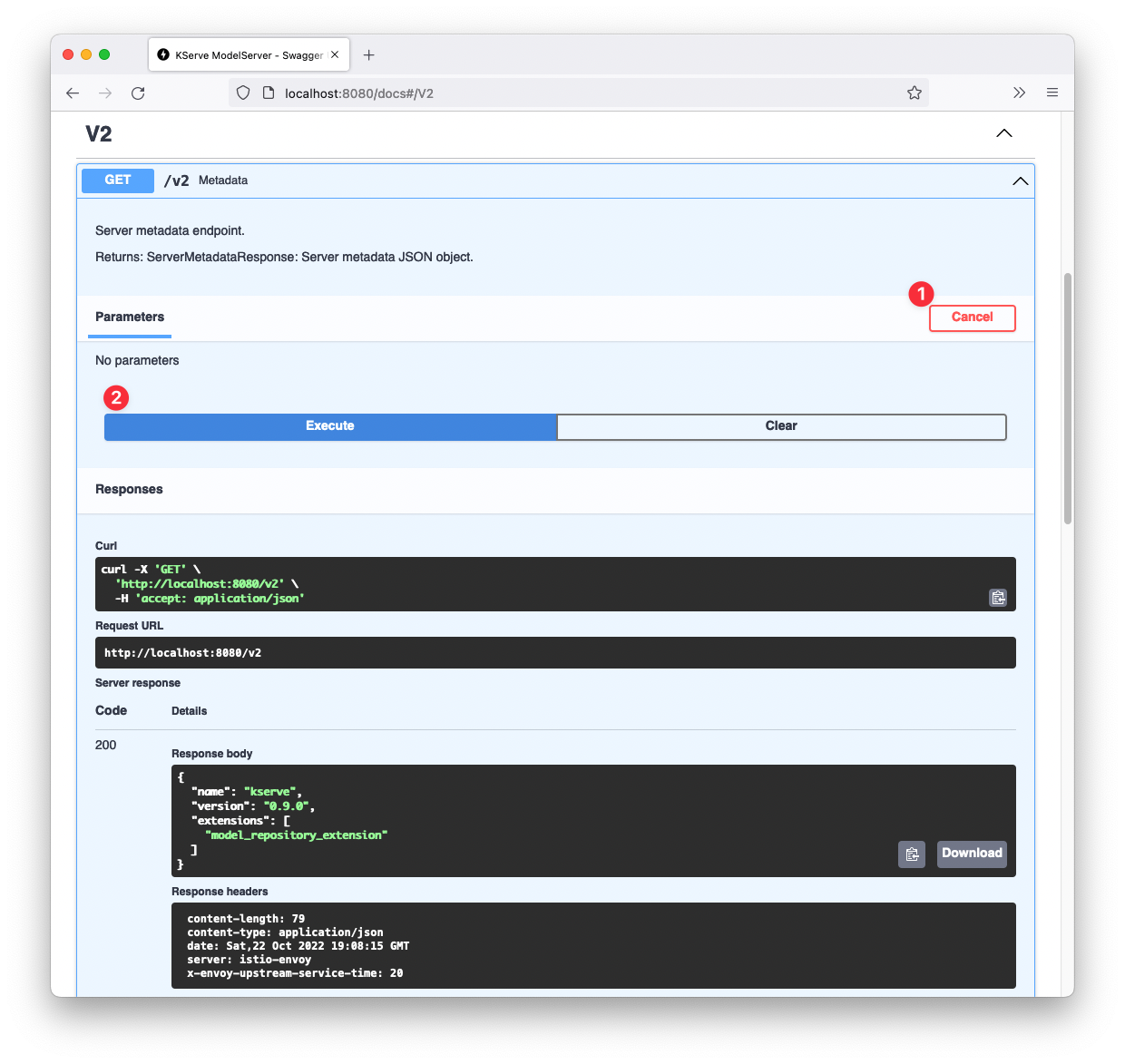Interact with InferenceService Swagger UI
InferenceService Swagger UI¶
KServe ModelServer is built on top of FastAPI, which brings out-of-box support for OpenAPI specification and Swagger UI.
Swagger UI allows visualizing and interacting with the KServe InferenceService API directly in the browser, making it easy for exploring the endpoints and validating the outputs without using any command-line tool.

Enable Swagger UI¶
Warning
Be careful when enabling this for your production InferenceService deployments since the endpoint does not require authentication at this time.
Currently, POST request only work for v2 endpoints in the UI.
To enable, simply add an extra argument to the InferenceService YAML example from First Inference chapter:
kubectl apply -n kserve-test -f - <<EOF
apiVersion: "serving.kserve.io/v1beta1"
kind: "InferenceService"
metadata:
name: "sklearn-iris"
spec:
predictor:
model:
args: ["--enable_docs_url=True"]
modelFormat:
name: sklearn
storageUri: "gs://kfserving-examples/models/sklearn/1.0/model"
EOF
After the InferenceService becomes ready the Swagger UI will be served at /docs.
In our example above, the Swagger UI will be available at http://sklearn-iris.kserve-test.example.com/docs.
Interact with InferenceService¶
Click one of the V2 endpoints like /v2, it will expand and display the description and response from this API endpoint:

Now, when you click "Try it out" and then "Execute", Swagger UI will send a GET request to the /v2 endpoint. The server response body and headers will be displayed at the bottom:

Similarly, we can use Swagger UI to send request to check the model metadata and make prediction using the /v2/models/{model_name}/infer endpoint.
For more reference, please check out Model Serving Data Plane for detailed documentation on the Inference Protocol.